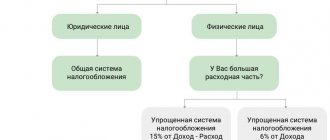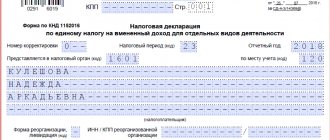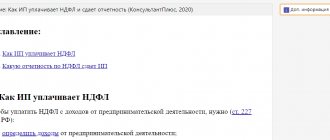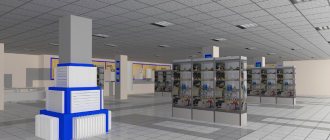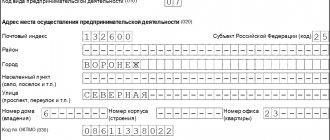Entrepreneurs engaged in trade are faced with the need to calculate the area of the trading floor, the value of which will be required when determining UTII. What is needed is the actual area, measured in square meters. The use of UNDV is allowed for retail space up to 150 m2.
A retail space is considered to be a part of a pavilion or store intended directly for communication between the buyer and the seller. The area calculation does not take into account the premises for acceptance, storage of goods, their pre-sale preparation, administrative and service premises.
How is retail space calculated?
A physical indicator called the sales floor area is used in the case of sales through the operation of a stationary retail chain facility that has a sales floor measuring less than 150 square meters. m. If there is no trading floor, one of two indicators is used - a retail space (if its area is no more than 5 square meters) or the area of a retail space, if such is more than 5 square meters.
For the correct application of UTII, it is necessary to clarify the question of where retail sales of goods are allowed. The transfer of retail trade to “imputation” is carried out if it is carried out in objects belonging to a stationary retail network. In this case, a retail space is any building (structure or premises) that is intended or used for trading activities. This moment is regulated by Article No. 346.27 of the Tax Code of the Russian Federation. You can find out about the purpose of the premises by looking at the title or inventory document. We are talking about a purchase and sale or lease agreement, a technical passport, as well as plans, explications and diagrams.
At first glance, one might decide that the imputed tax can be charged not only on the area of shopping complexes, but also applied to any premises where trade takes place. For example, to a warehouse or other premises not intended for trade. But according to the clarification of the Ministry of Finance, the sale of goods in such areas initially not intended for trade is not transferred to UTII.
When calculating the physical indicator, is it necessary to take into account premises not used in trade?
In their letters, the regulatory authorities insist that in the previously mentioned Chapter. 26.3 of the Tax Code of the Russian Federation there is no provision according to which it is possible to exclude from the area of a retail space the area that is free from customer service. This refers to utility rooms, warehouses, etc. (letters of the Ministry of Finance of Russia dated March 5, 2012 No. 03-11-11/68, dated December 26, 2011 No. 03-11-11/320, Federal Tax Service of Russia dated June 25, 2009 No. ShS-22 -3/ [email protected] ).
Such actions are permissible only in relation to shops and pavilions, since they have trading floors (paragraph 22 of article 346.27 of the Tax Code of the Russian Federation).
This point of view is supported by arbitration courts at all levels, up to the Supreme Arbitration Court of the Russian Federation (resolution No. 417/11 dated June 14, 2011). As an example of decisions of lower courts, one can cite the decisions of the FAS Volga-Vyatka District dated March 12, 2013 No. A79-7818/2012, the Moscow District FAS dated February 10, 2012 No. A41-31817/10, the FAS Central District dated March 11, 2011 No. A62- 4419/2010).
Finally, the Constitutional Court of the Russian Federation holds a similar opinion regarding trading places, which, in its ruling dated July 16, 2013 No. 1075-O, did not find this a violation of the rights of UTII payers.
In this regard, in order to avoid additional charges during tax inspections, the area of the retail space should include those places and premises where the goods are stored or prepared for sale.
How is the area of a sales area calculated?
The Tax Code states that it should be determined in accordance with title and inventory documents. The situation is exactly the same with regard to the area of the retail space. Tax authorities and entrepreneurs often argue with each other over the discrepancy between the area actually used for trading and that indicated in the documentation.
The courts are of the opinion in this matter that the imputed tax must be calculated on the basis of the actually used square meters of this same retail space. But if such a discrepancy is not confirmed by witness testimony, photographs or existing partitions (as well as other evidence), the court will decide in favor of the tax authorities.
Record the results of viewing each retail space
No matter how you search for real estate, it is useful to record the results of your searches. While viewing the room, take photos, and then put them into folders for each object.
Record the results of each viewing, take photos and put them in folders. This will help you remember what you looked at, and it will be easier to compare objects with each other.
Lease agreement: read carefully
Therefore, when leasing premises and using only part of it for trade, make sure that the lease agreement contains clear explanations regarding the actual area being used. The calculation of the imputed tax does not include that part of the trading floor that is leased or subleased. When calculating the area of the sales floor, the so-called auxiliary premises - administrative and household purposes and those used for storing and receiving goods - are not taken into account.
If such premises are physically fenced off from the sales floor, the number of claims in the event of an inspection will immediately decrease by an order of magnitude. If the size of the area changes or its purpose is changed, the manager should document this in order to avoid disagreements with the inspection authorities.
The tax base
To calculate UTII, first determine the tax base for the reporting quarter. This can be done using the formula:
| Tax base for UTII for the quarter | = | Basic profitability per month (RUB 1,800) | × | The area of the trading floor used for purchase and sale transactions in the first month of the quarter | + | The area of the trading floor used for purchase and sale transactions in the second month of the quarter | + | The area of the trading floor used for purchase and sale transactions in the third month of the quarter | × | K1 | × | K2 |
The value of the physical indicator - the area of the sales floor - is included in the calculation of UTII rounded to whole units (Clause 11 of Article 346.29 of the Tax Code of the Russian Federation). When rounding the size of a physical indicator, discard values less than 0.5 units, and round 0.5 units or more to a whole unit (letter of the Ministry of Finance of Russia dated June 16, 2009 No. 03-11-11/111).
How to save money on a showroom
An exhibition hall can also be called a trading hall - if goods are sold directly there. Sometimes the display of goods, payment and actual release are carried out in different premises. In this case, it would be correct to calculate the tax taking into account the total area of the retail premises.
Sometimes a specific entrepreneur (organization) sells goods simultaneously in several premises located in the same building. For example, in a vast area of a shopping center - on different floors or simply apart from each other. Then UTII is calculated separately for each of them.
Target audience is another guideline when choosing a retail space
In addition to the business model, the choice of premises and its location is influenced by the target audience of your business. Think about who is interested in your products and under what conditions. Which one do you want to sell to most often and most? Let's look at an example from the pharmacy business.
Types of customers in pharmacies
Create a portrait of your target audience and decide who you want to sell to most. Select the premises for these buyers
Let's talk about the area of the retail space
A retail space is not necessarily a huge store. Sales can also be carried out in a small area called a trading place. What is included in the concept of retail space and how to determine it? The Tax Code does not provide clear instructions in this regard. The Ministry of Finance believes that its calculation includes, along with the territory where the direct sale of goods takes place, the sum of all areas of auxiliary premises. For example, in the case of renting a container, partly used for the sale of goods, and partly as a warehouse, the tax is calculated on its entire area.
Thus, in some situations, it is more profitable for entrepreneurs if their sales premises have the status of a trading floor. Then the tax amount can be reduced. Judicial practice contains many examples of disagreements about what is considered a trading floor and what is considered a trading place. In practice, they focus on the presence of a certain space in which buyers have the opportunity to move between shelves with goods and make their choice.
Situation 3: when division of a business does not give the right to use UTII
In order to apply UTII, the spouses - individual entrepreneurs, owners of several stores - attempted to split the business. More precisely, initially the wife had the status of an individual entrepreneur, and her husband, who served as the executive director in his wife’s business, received the status of an individual entrepreneur later.
Then the husband leased part of the retail space from his wife and formally began trading using the simplified tax system. The remaining retail space at the wife's disposal (in three stores) allowed her to switch to UTII.
The tax authorities considered that such a transition was illegal, since in fact only the spouse used the entire trading area. The conclusion of lease agreements with my husband was of a formal nature: in fact, the areas of the premises were not allocated, but were marked only with a yellow marker in copies of the technical passports of the facility. There were no partitions or walls within the designated boundaries of the premises.
The routine inspection report conducted by the Rospotrebnadzor Department also did not contain information that two entrepreneurs were operating on the territory of the stores in question.
The husband purchased goods for his own trade from his wife at retail. All stores had one cash register with two cash registers, but in each case both cash registers were serviced by the same cashier.
The tax authorities considered that we were talking about concerted actions of entrepreneurs based on their marriage, the purpose of which was to obtain an unjustified tax benefit, and that in fact the wife could trade in all areas of her stores without involving her husband. That is, the fragmentation of the business in this case was aimed at illegal tax optimization.
Position in favor of the business owner
The court of first instance supported the business owner, finding that her husband was an independent entrepreneur.
Let us present some arguments of the judges: the stores are not divided into separate premises, however, the price tags of the two individual entrepreneurs are presented strictly in different parts of each store, while the division of retail space was carried out using racks and display cases. The assortment list of goods sold by one individual entrepreneur did not correspond to the list of goods sold by another individual entrepreneur. One cashier serviced both machines, but each individual entrepreneur entered into an employment contract with him separately. Some of the employees worked part-time for both individual entrepreneurs (and their responsibilities were different), and some worked separately for each of them. The husband purchased goods from his wife, but this can be explained by the opportunity to save on costs associated with searching and purchasing goods, as well as on transportation costs. In addition, the individual entrepreneur husband purchased goods for trade from other suppliers, although in significantly smaller volumes (approximately 2%). By virtue of Art. 34 of the Family Code of the Russian Federation, the stores in question are subject to the regime of joint ownership of spouses, therefore the spouse has every right to conduct business activities using these stores. The fact that as a result of the husband’s entrepreneurial activity the wife acquired the right to use the taxation system in the form of UTII cannot indicate that she received an unjustified tax benefit.
The appeal upheld the trial court's verdict.
Position in favor of the Federal Tax Service
By the time the case was considered in the cassation court, the tax authorities supplemented their claims. Let's bring them.
Lease agreements for non-residential premises were concluded by spouses formally, as they contain contradictions and inaccuracies, and the amount of rent is not documented and does not correspond to market prices. Inventory and technical documents do not allow us to determine the size of the rented area, nor to evaluate parts of the sales area of stores as separate objects of trade organization. The stores have one entrance, one sign, one operating mode, one cash register, common utility, utility and storage areas. The division of the retail space of the stores, as well as the assortment of goods, is of a formal nature, since all the stores functioned as a single retail facility and were perceived by customers as a single space, as one trading floor with different departments for the assortment of goods. Individual entrepreneurs' current accounts are opened in the same banks, and the husband has a power of attorney to manage his wife's account. Personnel records for individual entrepreneurs were kept by the same person. All expenses associated with the sale of goods through stores were handled by the wife alone.
The court, in turn, indicated that the presence or absence of an agreement on the transfer of part of the common property for rent to the other spouse has no legal significance, since the spouses have the same powers in relation to this property. But in this situation, the main thing is the fact of the existence of independent objects of trade organization. Their independence is determined not only by the presence of signs of isolation, but also by the independence of the activities carried out in a given object.
The judges noted that the husband purchased goods from his wife for sale in the amount of about 98% of all his purchases.
The AC of the Far Eastern District noted that the lower court judges assessed each claim of the tax authorities separately and rejected them. But in order to establish the truth, it was necessary to evaluate all the arguments of the Federal Tax Service in their entirety. Therefore, the case was sent for review to the first instance (resolution of the Far Eastern District Court of January 19, 2017 No. F03-5944/2016).
What's the difference
Such a feature, by definition, cannot be inherent in a retail space, which most often looks like a counter or showcase with goods displayed, directly from which sales are made. The Federal Tax Service believes that if the inventory or title documents of the premises do not contain an indication of the status of a store or pavilion or there is no clear definition of part of the premises as a trading floor, then the mentioned object can by default be considered to belong to a stationary retail chain and not have a trading floor.
Sometimes, in the entire retail space market, objects with a sales floor include exclusively shops or pavilions. That is, in the case of sales in a former warehouse, it is necessary to prove the status of the premises as a trading floor. At the same time, in a container-type pavilion, a trading floor is implied by definition, based on the word “pavilion” alone.
The law is like a drawbar, as the court turned, so it turned out
Some trading floor criteria are attempted to shape the courts when reviewing the materials of specific cases.
